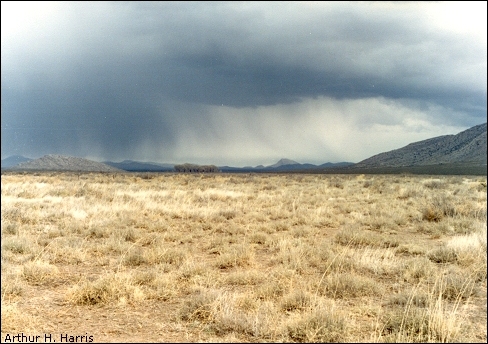

Walk outside after a rainstorm, and take a deep breath. Can you smell it? What is this tantalizing aroma in the air? Perhaps you've visited other places where rain doesn't create the same scent. What magical potion do we have that gives us this wonderful fragrance?
Water droplets in the air carry scents well, so the smell of rain anywhere is a combination of many things. Water molecules carry scents from such things as oils released from plants, other chemicals, and even spores from tiny bacteria, called "actinomycetes". The spores are only released with a good rain—usually after a drought. That's why the desert has many of these in the air after a storm. Try sniffing a Creosote Bush—is this scent familiar? Creosote Bush is another major producer of our rain smell! Brew a little, and you'll learn how pungent an odor it can create!
Visit our Chihuahuan Desert Gardens at the Centennial Museum and try
sniffing other plants. Can you recognize other aromas from our sweet-smelling rain? We
might not get much precipitation here, but only we desert dwellers get to enjoy the
marvelous fragrance peculiar to our area!

Listen to the Audio (mp3 format) as recorded by KTEP, Public Radio for the Southwest.
Contributor: Kodi R. Jeffery, Centennial Museum, University of Texas at El Paso.
Desert Diary is a joint production of the Centennial Museum and KTEP National Public Radio at the University of Texas at El Paso.

Rainstorm moving through Hachita Gap, Hidalgo County, New Mexico, bringing welcome moisture and a marvelous fragrance. Photograph by Arthur H. Harris.
Kathy Miles. Includes an explanation of the "smell of rain".